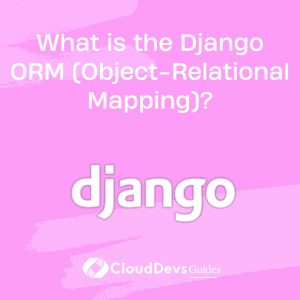What is the Django ORM (Object-Relational Mapping)?
The Django ORM, or Object-Relational Mapping, is a powerful and integral component of the Django web framework. It’s a sophisticated tool that simplifies database interactions in web applications, allowing developers to work with databases using Python objects instead of writing raw SQL queries. Here’s a detailed explanation of the Django ORM:
At its core, the Django ORM bridges the gap between the object-oriented Python world and the relational database world. It accomplishes this by mapping database tables to Python classes and database records to instances of those classes. These Python classes, known as models, define the structure and behavior of your application’s data.
Key aspects of the Django ORM include:
- Model Definition: Developers define models by creating Python classes that inherit from `django.db.models.Model`. Each attribute of the model class corresponds to a database field, and the model’s methods define behaviors such as data validation and business logic.
- Database Schema Generation: With the model classes in place, Django can automatically generate the database schema, including tables, fields, and relationships. Developers don’t need to write SQL CREATE TABLE statements; Django handles this for you.
- Database Queries: The ORM provides a high-level, Pythonic API for querying the database. You can retrieve, filter, and manipulate data using methods like `filter()`, `get()`, `annotate()`, and `aggregate()`. These queries are database-agnostic, meaning Django can work with different database backends such as PostgreSQL, MySQL, SQLite, or Oracle.
- Relationships: The Django ORM simplifies the management of relationships between models, such as one-to-one, one-to-many, and many-to-many relationships. It automatically handles foreign keys and joins, making complex queries straightforward.
- Data Validation: The ORM includes built-in data validation, ensuring that only valid data is saved to the database. It checks data against field constraints defined in the model.
- Middleware: Middleware components in Django can intercept database queries, allowing you to add custom logic or perform actions like query optimization.
- Database Migrations: As your application evolves, you can make changes to your models, and Django’s migration framework generates the necessary database schema migrations. This simplifies the process of evolving your database schema over time.
The Django ORM significantly accelerates web development by abstracting the database layer and providing a high-level, Pythonic interface for working with data. It promotes clean, maintainable code and reduces the need for manual SQL queries, making database operations more accessible and efficient for developers.






